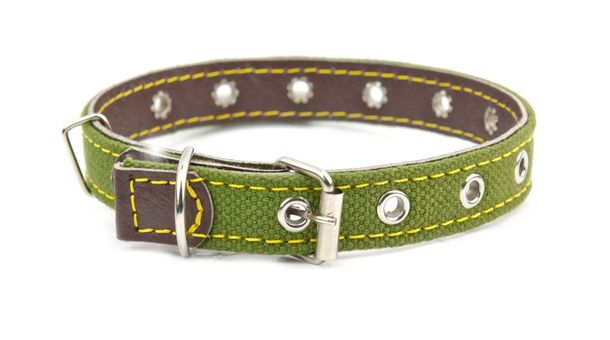Most dog owners prefer using collars with bells for their dogs. If you plan to get one for yours, you may want to know if collars with bells are bad for dogs.
Are collars with bells bad for dogs?
Whether or not collars with bells are bad for dogs is subjective and depends on the individual dog’s needs and preferences and the owner’s personal preferences.
Some dogs may find the noise or weight of the bell uncomfortable or distracting, leading to scratching or discomfort.
some dogs may be noise-sensitive and find the constant jingling of the bell stressful or irritating.
Reason Why collars with bells bad for dogs:

There are a few reasons why collars with bells can be bad for dogs:
Discomfort:
The bells on the collar can be heavy or noisy, making some dogs uncomfortable. This discomfort may cause the dog to scratch or paw at the collar, leading to further irritation or injury.
Noise sensitivity:
Some dogs are more sensitive to noise than others, and the constant jingling of the bells can be irritating or stressful for them. This can lead to anxiety or other behavioral issues.
Disruptive to others:
In quiet environments, the sound of the bells can be disruptive to neighbors or other people nearby. This may be a particular concern in apartment buildings or shared living spaces.
Not foolproof:
Using collars with bells does not guarantee that a lost dog will be located. If the dog is too far away or the bell is too soft, it may not be heard, and some dogs may learn to move in a way that prevents the bell from ringing.
Why Do We Use Dog Collars?

Dog collars serve a variety of purposes and are commonly used for the following reasons:
Identification:
Dog collars are often used as a means of identification, allowing owners to attach tags that display the dog’s name, address, and contact information. This makes it easier for people to return a lost dog to its owner.
Control:
Collars are also used to control a dog’s behavior, particularly when walking or training. A collar can be attached to a leash, allowing an owner to guide and direct the dog’s movements.
Safety:
Some dog collars are designed to improve the dog’s safety, such as reflective collars that make the dog more visible in low-light conditions.
Fashion:
Dog collars are also used for fashion, allowing owners to personalize their dog’s appearance with different colors, patterns, and materials.
Medical:
In some cases, a dog collar may be used for medical purposes, such as to hold an identification tag with important health information or to attach a medication patch or device.
Why do dogs have bells on their collars?
Here are some reasons why dogs may have bells on their collars:
Location:
- Bells can help owners locate their dogs if they wander off or get lost.
- The sound of the bell can make tracking the dog’s location easier.
Safety:
- Bells can make dogs more visible and audible to others, especially in low-light conditions.
- This can help prevent accidents and keep the dog and its owner safe.
Training:
- Bells can be used as a training tool to reinforce good behavior and teach dogs new commands.
- The sound of the bell can be associated with positive experiences, such as getting a treat or walking.
Identification:
- Bells can be used as a form of identification, especially if the collar also has the dog’s name and contact information.
- This can be helpful if the dog is lost and someone finds them.
Hunting:
- In some hunting scenarios, bells help hunters locate their dogs.
Medical reasons:
- Some dogs may have medical conditions that require them to wear a bell on their collar.
- For example, a dog with hearing loss may benefit from the sound of the bell to alert them to their owner’s presence.
The Pros and Cons of Using Bells in Dog Collars:
The use of bells in dog collars has both advantages and disadvantages. Here are some of the pros and cons of using bells in dog collars:
Pros:
- Safety: Bells in dog collars can help keep your dog safe by making them more visible and audible. This can be particularly useful when walking your dog in low-light conditions or areas with heavy traffic.
- Location: Bells can also help you locate your dog if they wander off or gets lost. The sound of the bell can help you track and find your dog’s movements more quickly.
- Training: Bells can be used as a training tool to teach your dog to come when called. You can ring the bell every time you call your dog, and eventually, they will learn to associate the sound of the bell with the command to come.
Cons:
- Noise: Bells can be noisy, which can irritate some people. If you live in a quiet neighborhood, the constant jingling of the bell can be disruptive to your neighbors.
- Comfort: Some dogs may find the bells uncomfortable to wear around their necks, particularly if they are sensitive to noise or tend to scratch at their collars.
- False sense of security: While bells can help locate your dog, they are not foolproof. If your dog is too far away or the bell is too soft, you may not be able to hear it. Additionally, some dogs may learn to move in a way that prevents the bell from ringing, making it harder to track them.
CONCLUSION
Opinions on whether collars with bells are good or bad for dogs vary among dog owners. Some say their dog likes the sound of the bell, and others say that their dog hates it. Ultimately, it depends on your dog if they are comfortable with wearing it, and you can always get a professional opinion if you’re unsure.
Are collars with bells bad for dogs? Are collars with bells bad for dogs? Are collars with bells bad for dogs? Are collars with bells bad for dogs? Are collars with bells bad for dogs? Are collars with bells bad for dogs? Are collars with bells bad for dogs? Are collars with bells bad for dogs? Are collars with bells bad for dogs?




